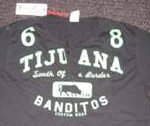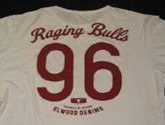A rose by any other name (may still infringe copyright)
Market Insights
A common misconception of copyright law is that as long as you change a certain percentage of the original design, you will not infringe copyright. This is, for anyone wondering, not true.
You may be surprised to know, however, that even if every part is changed, copyright may still be infringed. This is important for any creative professional – including graphic designers, architects, musicians and fashion designers – to ensure that they do not infringe other people’s work and to properly protect their own.
This concept might be most intuitively demonstrated by the example of replacing every word in a given paragraph with a thesaurus or by translating it into another language. This would almost certainly amount to copyright infringement, notwithstanding that no two words were identical, because the structure, layout and meaning are replicated in the new paragraph.
It is less intuitive when applied to graphic works. The following are examples of artistic works on clothes that infringed copyright. In each case the original is on the left and the infringing copy is on the right.
 |  |  |  |
 |  | ||
 |  |  |  |
In the above examples, each copy was found to have copied the elements, arrangement, layout and/or combination of the original, even though no particular part of the original artwork had been copied ‘exactly’.
There are two relevant questions in any copyright infringement case. First, has some part of the original work been copied? As shown above, this does not need to be an exact part and can be the ‘layout’ or ‘arrangement’ of elements. Second, are those copied parts a substantial part of the original?
Has the original work (or some part of it) been copied?
Whether a particular work copies another can be established directly or by inference. An admission, for instance, would establish copying directly. In the case of the English rose design above, there were emails between City Beach (the infringer) and its designer asking the designer to copy Seafolly’s original design.
It is also possible to establish copying by inference. This is normally done by establishing that the defendant had access to the original and that the defendant’s work is so similar to the original to give rise to the inference that it has been copied. For instance, in Eagle Homes Pty Ltd v Austec Homes Pty Ltd, a residential architectural claim, the ‘layout and traffic flows and the shapes, proportions and interrelationships of the rooms and other spaces’ of the two designs were sufficiently similar to justify inferring that the latter copied the original.
In other cases, both factors can work together such as in Designers Guild Ltd v Russell Williams (Textiles) Ltd – the stylised flowers shown above. There, the judge found that the similarities between the two artworks went ‘far beyond the similarities which would be expected simply from both being based on an impressionistic style or from both being based on a combination of stripes and scattered flowers and leaves’. The judge also found that the defendant gave a false explanation as to the provenance of the defendant’s design and that the defendant had a history of copying competitors’ designs. Together, this was enough to find that the original artwork had been copied.
Where there is direct copying, this will be relatively easy to answer. In examples such as those shown above, it is aspects such as the choice of colours, ‘flow’, brush strokes, layout and composition that were copied.
Do the copied parts amount to a substantial part of the original?
If there has been copying, has a substantial part of the original been copied. There is no need to compare the original work to the new work. That is, it is no defence to argue that the copied part is a very small part of the new work (for instance, Men At Work’s Down Under copied only 2 bars of Kookaburra Sits in the Old Gumtree. This was a very small part of Down Under but 50% of Kookaburra).
The only question is whether that which was copied is a substantial part of the original work? This is a case-by-case analysis each time, and will usually depend more on the quality than the quantity of what was taken. This is often a difficult question that requires specific legal advice. In those examples set out above, however, the answer was ‘yes’, even though there was no exact copying.
And for those wondering, our reproduction of the above photographs might amount to copyright infringement if it did not fall within the fair dealing exception for reporting on judicial proceedings.
This article was written by Jennifer Huby, Partner and Ben Cameron, Associate.
| Jennifer Huby P: +61 2 9334 8638 E: jhuby@hwle.com.au |
Subscribe for publications + events
HWLE regularly publishes articles and newsletters to keep our clients up to date on the latest legal developments and what this means for your business. To receive these updates via email, please complete the subscription form and indicate which areas of law you would like to receive information on.
* indicates required fields